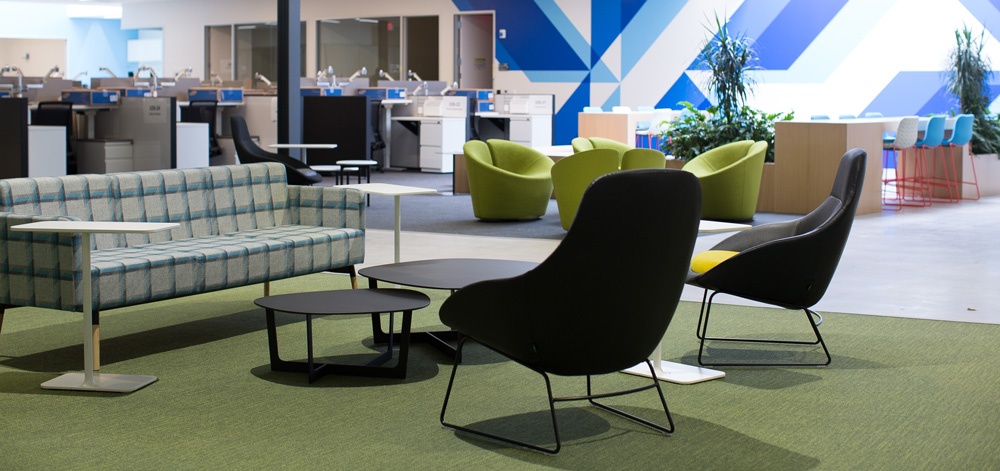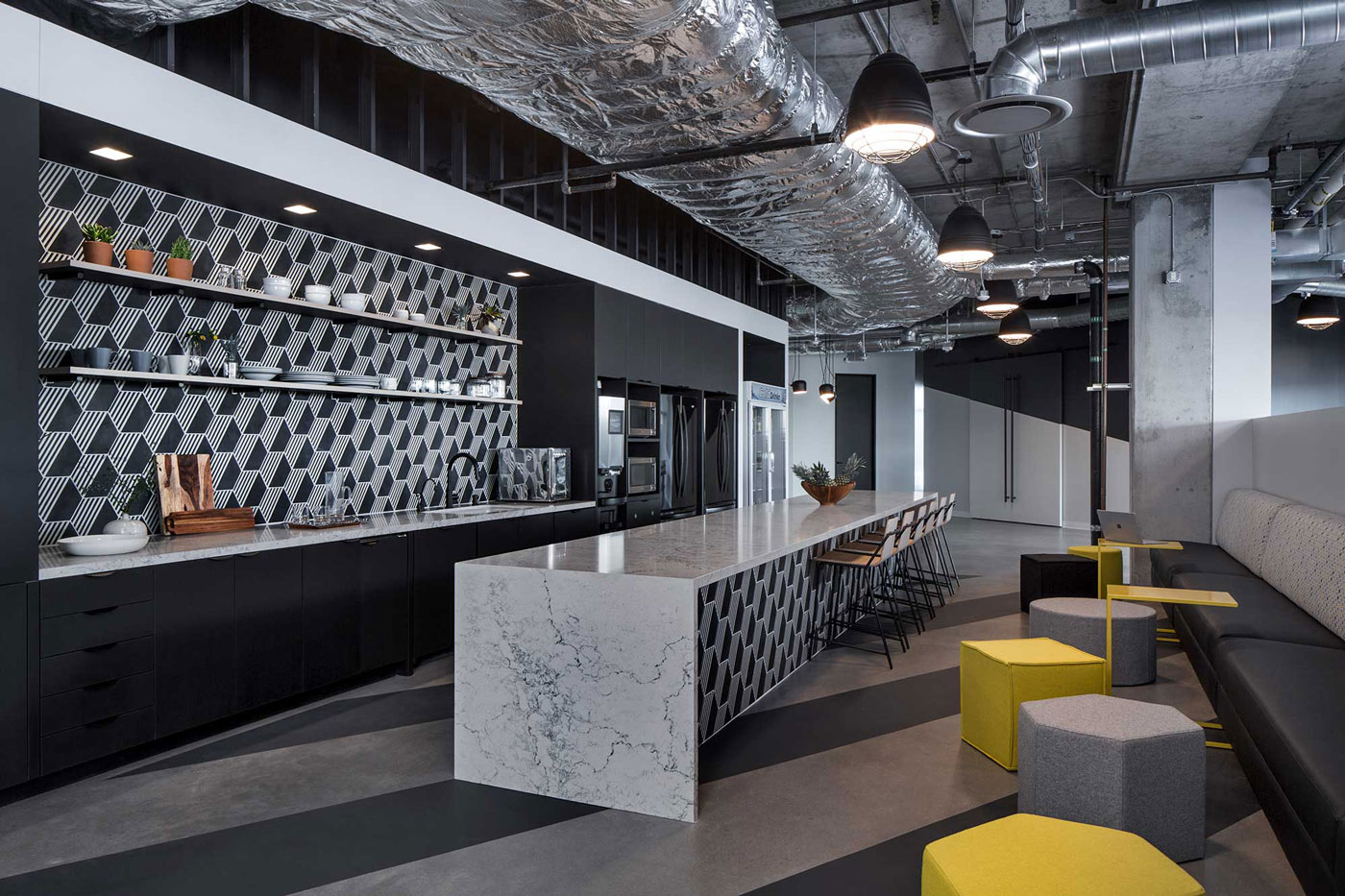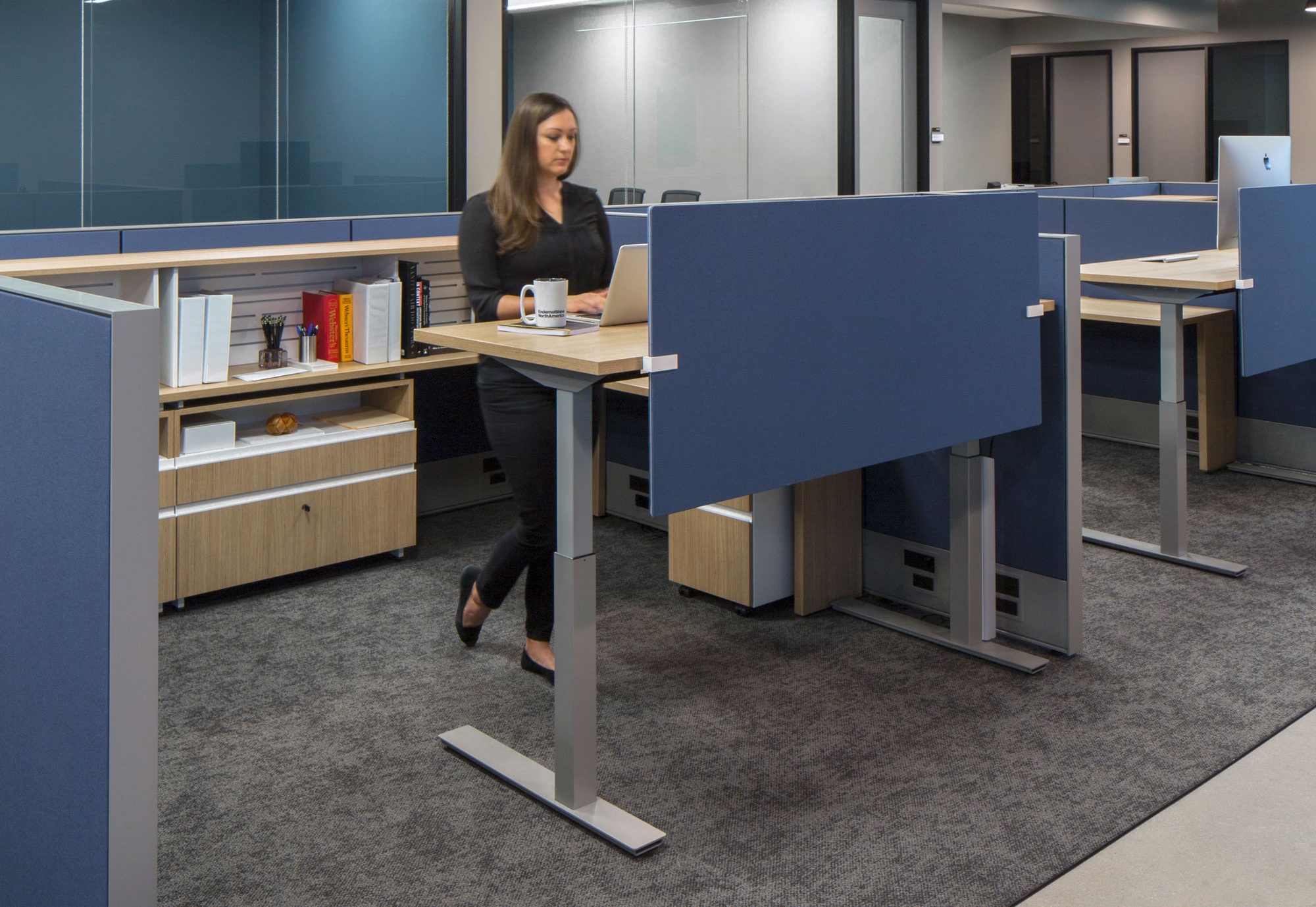
For 30+ years, we have been working on commercial workplace projects, from Fortune 500’s to emerging biotech start-ups. In recent years, we have seen a shift in workplace design, moving away from a one-size fits all model to a more inclusive, adaptable style. Whether it’s a ground-up project or a relocation, these three trends are redefining the office and putting the spotlight on employee comfort.

1. Agile Office
In the debate of open-plan versus cubicle-centric offices, we are seeing a merging of the two styles. Once considered cutting-edge, the open-office is no longer seen as a the optimal solution. Instead, workplace designers are improving on that, and are now creating spaces that blend the social, collaborative nature of the open-plan with the focus and privacy of private spaces. It's the best of both worlds. This agile office design concept empowers employees to choose how and where they work, based on their individual working style. A recent academic study finds that open office plans are not effective for promoting collaboration; rather, their research supports an agile office design that focuses on a balanced blend of private and collaborative spaces.
Related Download: The Agile Office Transformation Handbook (free download)
2. Culture-Branded Spaces
We are seeing companies leverage their physical space to reinforce their brand and promote their corporate culture. Their identity truly becomes infused throughout their office. And we’re not talking about a logo in the reception area — we’re seeing fully branded environments that communicate a company’s story and values through workplace design and furniture.
Culture-branded spaces range from using custom brand color schemes throughout the office like we helped Dole Packaged Foods do with their Southern California headquarters. It also encompasses creating identity and integrating the drive behind a company as is evident in the work we did for PAC-12 Enterprises’ San Francisco headquarters.
Related Download: Improving Corporate Culture Through Workplace Design (free download)
3. Healthy Workstations
A key to employee wellbeing is to ensure that their workplace is working for them, not against them. Adjustable workstations that cater to individuals unique needs and comfort are becoming the the new standard. Sit-stand desks promote mobility. Adjustable desks and chairs allow employees to find the most appropriate position for correct posture. Colors, shapes, and materials are being used to create more productive workspaces that embody elements that we typically see in residential and hospitality. With an eye towards comfort, companies like Shawmut Construction, are infusing their offices with healthy solutions, designing work areas to meet their employees’ needs.
Related Article: Improving Employee Wellbeing Through Smart Office Design
To learn more about our services and how we can help transform your workplace, contact us for a free consultation.







